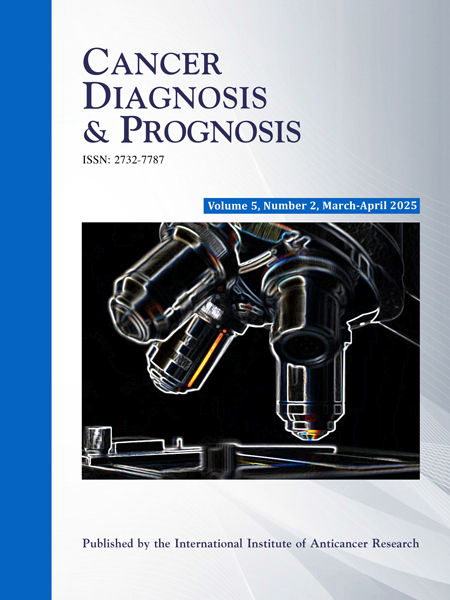
The topics of CDP include:
- Experimental development of new diagnostic and prognostic biomarkers.
- Clinical application of new biomarkers.
- Evaluation of combinations of past and emerging biomarkers.
- Molecular pathology and proteomics in the discovery of new biomarkers and systemic cancer staging.
- Genetic, epigenetic and chromosomal markers.
- Use of biomarkers in the selection of the proper cancer management.
- Use of biomarkers in assessing response, restaging and prognosis after surgery, radiotherapy, chemotherapy and/or immunotherapy.
- Use of diagnostic procedures including combinations of biomarkers and imaging in the selection and assessment of the proper cancer management.
- Novel surgery technologies in improving diagnosis and prognosis.
Special Issue
New Tumor Markers - 20251. TOPICS: A. Discovery of Novel Tumor Markers 1. Genomic and proteomic approaches
B. Tumor Markers for Prognosis and Treatment Response 1. Prognostic markers in cancer
3. The instructions to Authors of CANCER DIAGNOSIS & PROGNOSIS apply to this special issue, in the same way they apply to any CANCER DIAGNOSIS & PROGNOSIS issue. 4. Review articles should preferably not exceed 12 printed pages, corresponding to roughly 48 typewritten pages or roughly 12,000 words. There will be no page charges. Color figures should be charged US $350 per page. 5. Upon acceptance, Authors will be asked to pay an online publication fee of USD 600.00 (effective April 1, 2021) for articles up to 8 online pages (including figures and tables). Each additional excess page will be charged USD 60.00. Color will not be charged. 6. The special issue is scheduled for publication in November 2025. 7. Manuscripts should be submitted for publication through our new online submission system: www.iiar-submissions.com |
Dear Colleagues,
Welcome to the new international journal CANCER DIAGNOSIS & PROGNOSIS (CDP) published online – open access by the International Institute of Anticancer Research.
CDP's aim is to disseminate current advances that harness and facilitate cancer patient management and survival.
The Editorial Board of CDP consisting of distinguished researchers in the field of oncology will inspire and guide the journal's content.
Every effort will be made to maintain the highest scientific quality level, while securing wide exposure of the contents worldwide.
I look forward to welcoming you as Authors and Readers of CDP.
Sincerely,
George J. Delinasios
IIAR Director
CDP Managing Editor
